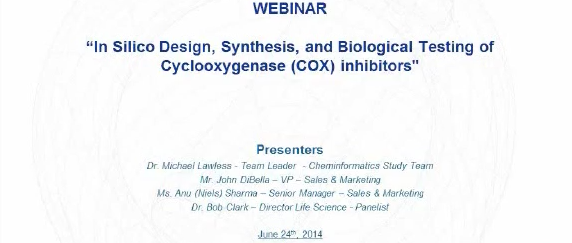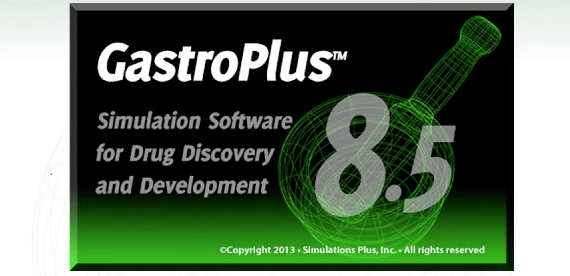Cash dividend declared of $0.05 per share

Simulations Plus Provides Additional Details Regarding Cognigen Acquisition
Investor Conference Call Scheduled for Friday, July 25, at 1:15 PM PDT

Simulations Plus to Acquire Cognigen Corporation
A leading provider of clinical trial data analysis to expand company’s offerings

Design of a General-Purpose European Compound Screening Library for EU-OPENSCREEN
This work describes a collaborative effort to define and apply a protocol for the rational selection of a general-purpose screening library, to be used by the screening platforms affiliated with the EU-OPENSCREEN initiative.

Predicting when Biliary Excretion of Parent Drug is a Major Route of Elimination in Humans
Biliary excretion is an important route of elimination for many drugs, yet measuring the extent of biliary elimination is difficult, invasive, and variable.

Mechanistic Modeling Reveals the Critical Knowledge Gaps in Bile Acid-Mediated DILI
Bile salt export pump (BSEP) inhibition has been proposed to be an important mechanism for drug-induced liver injury (DILI).

Maximum Entropy in Drug Discovery
Drug discovery applies multidisciplinary approaches either experimentally, computationally or both ways to identify lead compounds to treat various diseases.

Physiologically based pharmacokinetic modeling for assessing the clinical drug-drug interaction of alisporivir
Alisporivir is a novel cyclophilin-binding molecule with potent anti-hepatitis C virus (HCV) activity. In vitro data from human liver microsomes suggest that alisporivir is a substrate and a time-dependent inhibitor (TDI) of CYP3A4.

Simulations Plus Reports Third Quarter FY2014 Financial Results
Revenues up 20.9%, Net Income up 31.6%

Simulations Plus Sets Date for 3rd Quarter 2014 Earnings Release and Conference Call
Conference Call to be on Tuesday, July 8, at 4:15 PM ET

Freezing the Bioactive Conformation to Boost Potency: The Identification of BAY 85-8501, a Selective and Potent Inhibitor of Human Neutrophil Elastase for Pulmonary Diseases
Human neutrophil elastase (HNE) is a key protease for matrix degradation. High HNE activity is observed in inflammatory diseases.

Translational PK/PD modeling for cardiovascular safety assessment of drug candidates: Methods and examples in drug development
Cardiovascular toxicity is a significant cause of candidate failure in drug development. Pharmacokinetic/pharmacodynamic (PK/PD) modeling may reduce attrition by improving the understanding...

Testicular distribution and toxicity of a novel LTA4H inhibitor in rats
JNJ 40929837, a novel leukotriene A4 hydrolase inhibitor in drug development, was reported to induce testicular toxicity in rats.

Synthesis and in silico studies of pyrrolidine sulfonamide based dipeptides as ß-gluscosidase inhibitors
A series of novel pyrrolidine sulfonamide derivatives were designed, synthesized and screened in silico for their β-gluscosidase inhibitory activity.

Characterization of preclinical in vitro and in vivo ADME properties and prediction of human PK using a physiologically-based pharmacokinetic model for YQA-14, a new dopamine D3 receptor antagonist candidate for treatment of drug addiction
YQA-14 is a novel and selective dopamine D3 receptor antagonist, with potential for the treatment of drug addiction. However, earlier compounds in its structural class tend to have poor oral bioavailability.

Effects of novel cathepsin K inhibitor ONO-5334 on bone resorption markers: a study of four sustained release formulations with different pharmacokinetic patterns
The purpose of the study was clarify the effect of the cathepsin K inhibitor ONO 5334 on bone resortion markers using sustained release(SR) formulations with different pharmacokinetic (PK) patterns, and identify the optimal SR formulation.

In silico design, synthesis, & testing of Cyclooxygenase (COX) inhibitors
Following the success of our earlier NCE project, which focused on the design of antimalarial molecules, we sought to utilize our ADMET Design Suite™ to design novel compounds that inhibit both...

Using beta binomials to estimate classification uncertainty for ensemble models
Quantitative structure-activity (QSAR) models have enormous potential for reducing drug discovery and development costs as well as the need for animal testing.

GastroPlus™ Modeling Common Ion Effects and Enabled Formulations
Predictive mechanistic simulation of gastric dissolution and in vivo supersaturation and precipitation during oral absorption, using experimental parameters derived from in vitro measurements.
